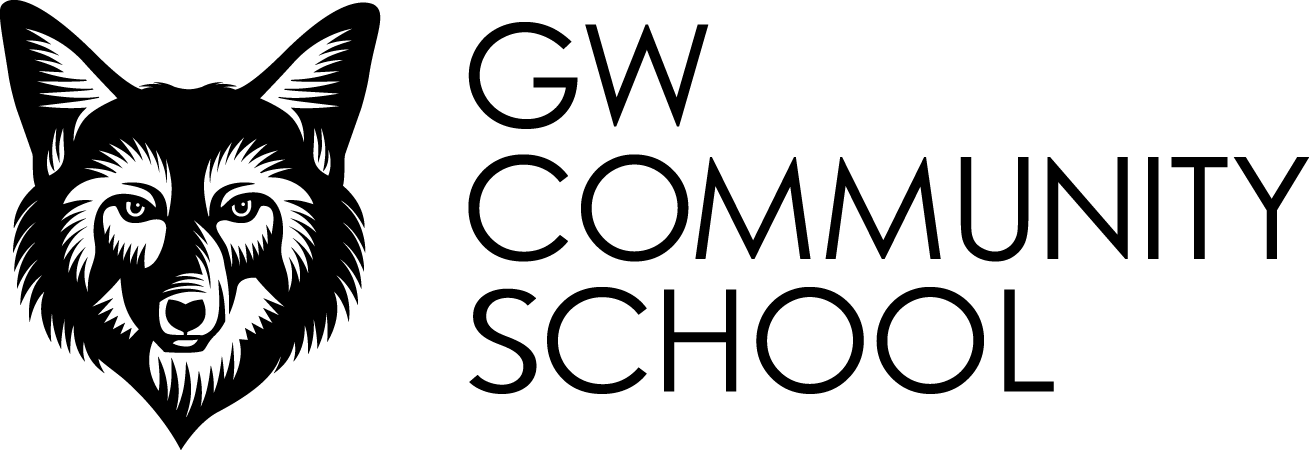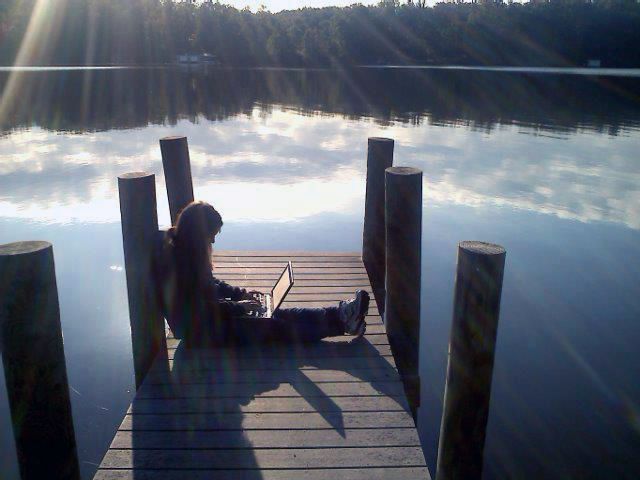We had a great year at GWCS - a year filled with incredible trips, exciting events, and awesome outside the box enrichment activities. But, as we wound up the year, teachers took a moment to reflect on their teaching experiences that took place inside the classroom. Below are snippets of our teacher's academic reflections from the 2015-2016 school year...
Mr. Andrews Bashan
English Teacher and Music Club Teacher
I know a project has landed with the students when students start approaching me outside of class with questions and ideas about the project. There were several that met that criteria this year: the Writing on the Walls project, reading Frankenstein, our Modernism unit, creating Historical Comic Books. But perhaps the highlight for me was our "Weakest Argument" contest. We discussed elements of weak arguments, then students scoured the web for articles they thought were weakly argued. We then compiled the arguments into a survey, voted on which was weakest, then discussed common features of those articles that won the most votes.
MR. CONNELLY
History Teacher, Yearbook Teacher and Basketball Coach
In Government and AP Government we take a deep look into the American political system and culture. Not only do we study the Constitution and branches of Government, but we dive into topics like Political Socialization and the effects our system has on the very politicians that run for office. An outside the box project we complete every year is the Propaganda Project. Students identify and analyze all of the different forms of propaganda and then create a commercial or political speech of their own to deliver to the class. We look at how propaganda is used not only in politics but also in mainstream advertising making our students more critical and educated citizens and consumers. Example Video
Dr. Cox
Astrophysics, Honors Physics and Environmental Science Teacher
One of the organizing principles of my Astronomy & Astrophysics class is using observations to distinguish between competing models of the universe. The killer observation for distinguishing between the geocentric and heliocentric views of the solar system is observing the phases of Venus. To help them understand this, we use a white Styrofoam ball to represent Venus and a single bright light source to represent the Sun. We turn off all the other light sources and physically model the appearance of Venus in both views of the solar system. We follow this with an activity that uses the planetarium software Stellarium, which allows students to step through time while viewing both the heliocentric solar system from the top down, and Venus as seen from Earth viewed first as a naked eye object and then zoomed in as if using a telescope. Then they draw the appearance of Venus as seen from Earth with a telescope at different points in its orbit. This allows them to integrate their knowledge and create a consistent model in their minds. They can see why the invention of the telescope was essential for determining the structure of the solar system.
Mr. Fedinatz
History Teacher, Personal Fitness, Softball and Flag Football Coach
One of my philosophies of teaching history is students should read primary documents from varying viewpoints to gain a deeper understanding of the time period and specific events in history. This allows students to identify with individual perspectives and use critical thinking skills identifying biases, contextualizing the time period and corroborating documents on their validity of the individual’s position.
One activity I use for U.S. History is a round-table discussion on the issues of the day in 1850. The setting is an ASA (Anti-Slavery Association) meeting. Each student created a back story of why they became members of this organization. A few examples were, an escaped slave, a child of a slave owner, and member of a Quaker family who had a proud tradition of being abolitionists. Each of these back stories gave the round-table an air of authenticity and a point of reference the student could refer back to. The topics discussed were should the ASA support the American Colonization Society? What was our stance on women’s rights including suffrage, and the most hotly contested topic, should we arm and participate with John Brown? Activities such as these allow students to become part of history not just memorize dates and events.
Mr. Lindner
Math Teacher and Robotics Coach
Today as we began the study of limits in Calculus Loea got really excited about a very challenging discussion concept. She asked questions that were exactly the next question to be addressed in the lecture. She was disappointed when the period ended because she still had questions and wanted to learn more. She was relieved when I reminded her that she could reread about it and re-watch the videos at home and even read ahead if she wanted to.
GWCS/Coyote Robotics Team 3749 "Even More Coyotes" went undefeated in Qualification rounds of the FTC Southwest Virginia Qualifying Tournament to finish ranked #1. Leading the Top Seed Alliance they selected the next best team and then their other Coyote Robotics Team 965 "More Coyotes" for the Elimination Rounds. They won two straight in both the Semi-Finals and then in the Finals to Win the Tournament! Way to go Coyote Robotics!
MS. NEWTON
Science Teacher & Reptile Caretaker
Science in Real Life: Limiting Reagents in Baking.
Chemistry is by no means an easy class. For most students, the content covered is not comparable to much of what they learned earlier in Middle School and freshman year of high school. For the first time, the science subject matter is not simply building on itself year to year and students are forced to enhance their skills in interpreting and implementing new material. Probably the bane of everyone’s existence in a general chemistry course is Stoichiometry (seriously, have you ever met anyone who claims to love it? Didn’t think so. Applying math and science to real life scenarios (because let’s be honest-those long winded word problems are not the real world for a teenager) makes things much more digestible. It also helps when what you have to digest happens to be a whole pan of brownies.
When I polled my class at the end of the year, hands down their favorite lab was the Brownie Lab, which was surprising given the amount of math involved AND the fact students had to work together outside of school to complete the project. Teams were given a recipe for brownies where some of the ingredients were more limiting than others. In any given recipe, it doesn’t matter how many sacks of flour you have, once your run out of eggs, you can’t make any more decent brownies -- and that is essentially what a limiting reagent is in a chemical reaction- a needed “ingredient” that is required to make a product. After baking at home, the groups brought in their brownies and everyone had an opportunity to try other groups. Let’s just say part of the fun was seeing how awful some of them turned out when lacking the needed components! This experiment got the kids doing math and science outside of school, it is what made me interested in teaching Food Chemistry as an elective next year. Apparently, the way to get teenagers to learn science is through their stomachs.
MR. PEREIRA
English Teacher and Personal Fitness Coach
After a long year of grammar, reading comprehension, and public speaking, what's an English class to do? Kick back and enjoy some good tunes. In my High School English class, students wrote papers that analyzed their favorite songs from both a lyrical and musical perspective. Then, they took those papers and turned them into multimedia presentations so they could share their knowledge, and their musical passions -- from Beyoncé and Taylor Swift to MF Doom and Minecraft-inspired chiptunes -- with the whole class.
MS. SHUMARD
French Teacher, Math Teacher, Girls Basketball and Softball Coach
French comes in handy in my everyday life, in the way I communicate with parts of my world, but this isn’t always relevant for students of French. Many students have not yet discovered the doors a second language can open for them. This is why I strive to find authentic communication experiences in French usage. Our trip to Bistrot du Coin in December is on of the most genuine and talked about experiences our students can have in the DC area. Bistrot du Coin could be located in the center of Paris. The waiters will speak French if asked, so of course, I do! French students may order what they would like (but they have to ask for it, en français!)
Because France loves its gastronomie, and the culture is so closely tied to food, we explore a lot of food related activities. French 1 receives a shopping list in French 2 teams compete to find their groceries first. French 2 follows a recipe recipe to make crèpes in the classroom. French 3 & 4 come to my personal kitchen and cook more complex dishes: ratatouille and coq au vin. But the class favorite is when all of the classes get together at Bistrot du Coin to enjoy a traditional French meal in a traditional French bistro.
Senor Torres
Spanish Teacher and Soccer Coach
I use different tools to teach Spanish vocabulary. One of the tools I use are games. Bachillerato is the name of one of these—it is a game about words. The students have to write a word starting with a specific letter as soon as possible. It’s fun, it’s competitive, and the students are very engaged. We came up with an “expanded version 2.0”for this year, because I wanted to try to enrich the whole experience and help the students learn more new vocabulary.
There are three main methods of teaching Spanish vocabulary: visual, interactive and creative. We use all of them in this activity (for that reason I called it “2.0”). Visually, students learn more when they use their senses. Being able to observe the Spanish words in addition to hearing them adds layers to their acquisition skills. Pronouncing the new word and showing an image to go with it helps even more. Another way to successfully acquire Spanish vocabulary, is to allow students to socialize and interact with the new words. I ask them during the game to use the words in many different situations. New Spanish vocabulary sticks in their memory when students have a chance to make it their own. Building on personal discovery and meaning allows kids to be creative with the words. When students use their personal ideas and expressions to make sense of new Spanish vocabulary, they make a new place in the brain for the words to be stored. Way better that just translation! For that reason, I think this activity is a keeper.



























